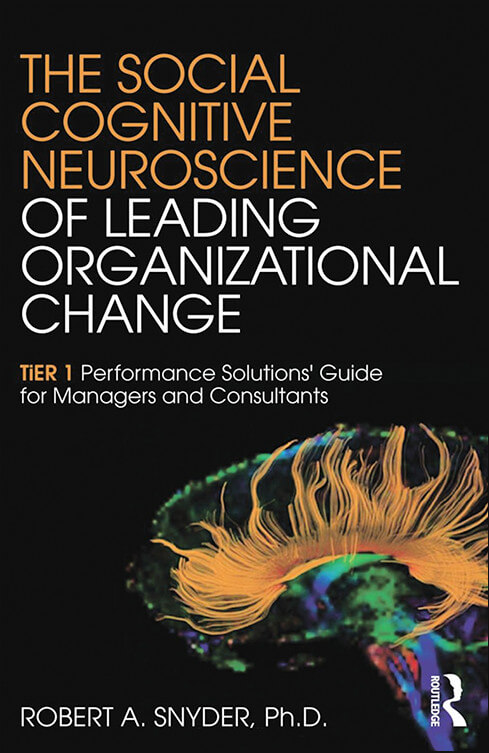
The Social Cognitive Neuroscience of Leading Organizational Change
By Rob Snyder, PhD, Senior Neuroscience Advisor at TiER1
with contributions from the TiER1 Change Management Team
WHAT thought leaders ARE SAYING ABOUT THE BOOK
About the Book
The book has a big title, but impacting people—their engagement, productivity, and overall “work happiness”—is no small task. We are so interested in how people change that we dove into the science of it with the impressive Robert Snyder, PhD, an expert in organizational psychology and TiER1’s Senior Neuroscience Advisor.
We know that strategic organizational change actually happens at the individual level by impacting people’s emotions and personal behavior. It’s about changing business processes and changing minds. That means the success of any strategic project, no matter how complex, hinges on one thing: your people.

Our people-centric view shows in TiER1’s unique Strategic Change Methodology, which has proven real results, with clients raving about high adoption rates and employee engagement, not to mention minimal productivity dips. This book goes in depth into the science behind that methodology.
From Chapter 5: “Most successful enterprise-wide organizational changes are given shape and form by a change management model of some sort. The characteristics of the models that are well-regarded and used widely vary greatly. Some are academic in origin… others have been cultivated in the course of consulting practice… some are quite complicated… while many are relatively simplistic.”
However, ours is one of only an exclusive few that have been fully informed by the latest insights garnered through social cognitive neuroscience.
We’d be happy to discuss the people approaches that will advance your next organizational strategy—and the brain—based science you can rely on to achieve it. Let’s talk!
EXPLORE MORE content FROM TiER1 PERFORMANCE
Aflac Takes Agent Learning Under its Wing
Most organizations invest in learning platforms—it’s a non-negotiable especially in industries with high regulatory standards and quickly-evolving processes and ways of working. Yet, not all organizations realize the full value of their investments. At Aflac, there...
Learning and Development Evolution
Priorities for a Seat at the Table
TiER1 Awarded Mental Health America Platinum Bell Seal for Workplace Mental Health
TiER1 joins just 1 in 4 employers that meet certification standards
READ MORE »



